Chili - The Spice of Life
Chili, a beloved spice used worldwide, is a versatile ingredient that adds depth, flavor, and heat to any dish. Known for its rich, spicy kick, chili peppers come in various forms, including fresh, dried, powdered, and as chili sauce or oil. Whether you're an adventurous cook or someone who enjoys adding a touch of heat to your meals, chili products offer the perfect solution.
Fresh Chili Peppers are vibrant, juicy, and packed with heat. From mild to extremely spicy varieties, fresh chilies can be sliced, diced, or used whole to infuse dishes with their pungent aroma. Great for stir-fries, salsas, and curries, fresh chilies add a fresh and bold flavor to your meals.
Dried Chili Peppers are perfect for slow-cooking and flavor extraction. When dried, chilies intensify their heat and smokiness. You can use them whole, ground into chili powder, or rehydrate them to create sauces and soups with a complex depth of flavor.
Chili Powder is a staple in kitchens around the world. A blend of dried chili peppers and other spices like cumin and garlic, chili powder adds a punch of heat and a savory aroma to dishes. Perfect for seasoning meats, soups, stews, and even grilled vegetables, chili powder offers convenience without compromising on flavor.
Chili Sauces and Oils are excellent for those who prefer a ready-to-use option. These products combine chili with ingredients like garlic, vinegar, or sesame oil to create flavorful sauces and oils that elevate your dishes instantly. Whether you like it sweet, tangy, or fiery, chili sauces and oils are perfect for dipping, marinating, or adding to your favorite foods.
Enhance your culinary creations with chili – a bold, flavorful ingredient that brings spice and excitement to every meal!
-
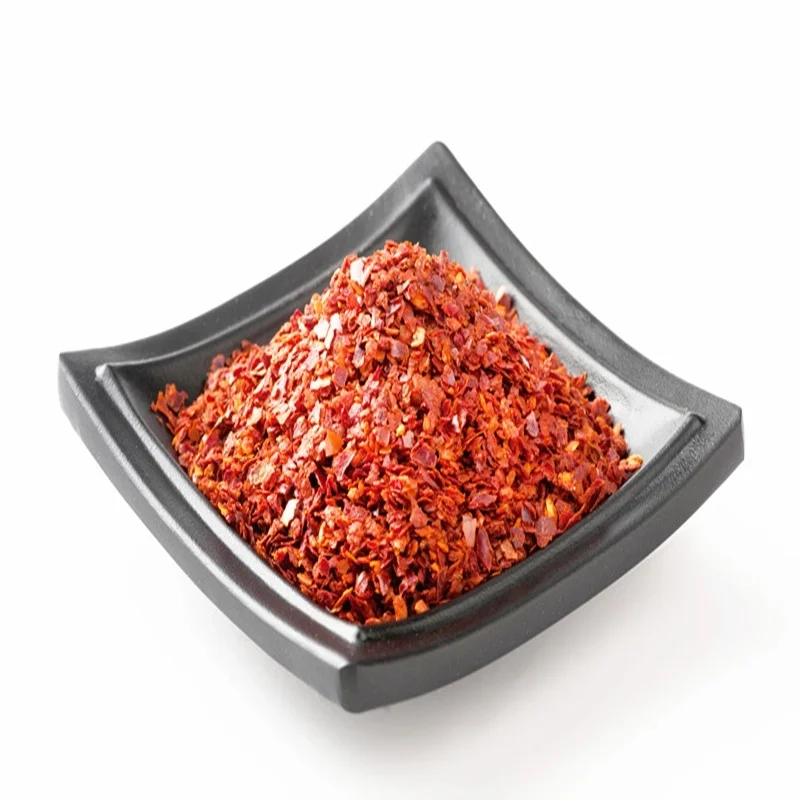
Gochugaru
2000-6000SHUGochugaru yii jẹ adayeba 100% laisi awọn afikun eyikeyi, ọja wa jẹ apẹrẹ fun yiyan, ni pataki ni awọn ilana kimchi olokiki Korean. Ni igbẹkẹle nipasẹ ọpọlọpọ awọn ami iyasọtọ kimchi Korean, gochugaru wa ṣe idaniloju otitọ ati mu awọn adun ibile dara. Ṣe alekun iriri mimu rẹ pẹlu Ere Gochugaru wa - yiyan mimọ fun awọn ti o wa didara ti ko ni adehun ni ṣiṣẹda didan ati awọn ounjẹ pickled Korean tootọ. Ye awọn lodi ti Korean aṣa atọwọdọwọ pẹlu wa exceptional gochugaru, ibi ti mimo pàdé awọn ọlọrọ iní ti pickling iperegede.
-
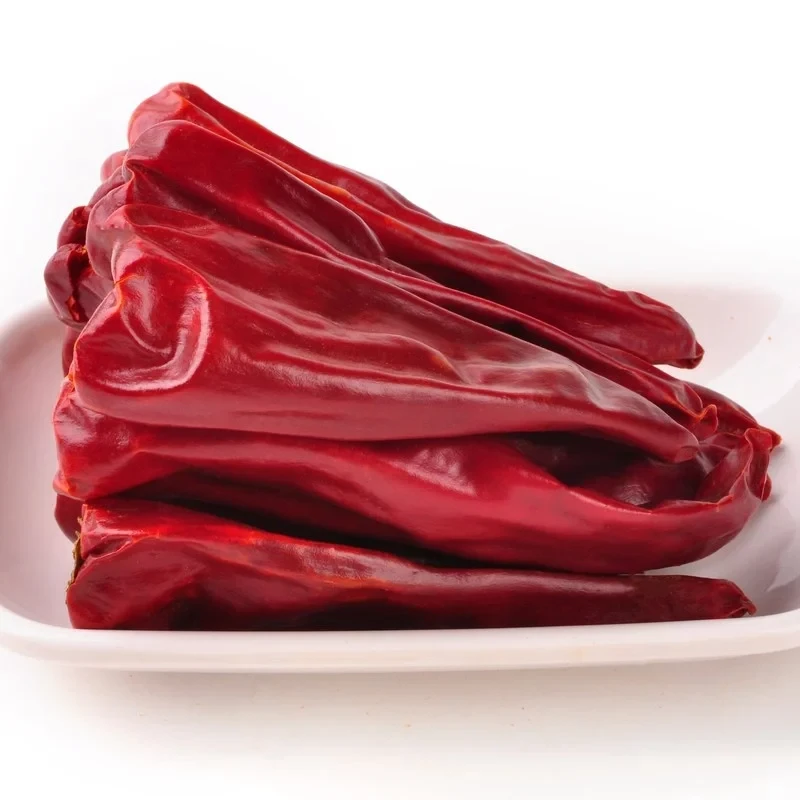
Yidu Ata ti o gbẹ
3000-5000SHUAta Yidu ti o gbẹ yii jẹ iṣọra ni ọwọ ati ti o gbẹ, ti o tọju awọn agbara adayeba wọn ati awọn ọna iṣelọpọ ibile, ti o yọrisi ohun elo onjẹ onjẹ Ere. O jẹ adayeba 100% laisi awọn afikun eyikeyi, ti o nfihan awọ pupa ti o larinrin, adun alailẹgbẹ, turari deede, ati didara to dayato. O ṣe iranṣẹ bi akoko yiyan ti ilera, gbigba awọn alabara laaye lati ṣatunṣe ipele ti turari ninu awọn ounjẹ wọn ni ibamu si awọn yiyan ti ara ẹni. Awọn agbara iyasọtọ ti ata Yidu ti o gbẹ jẹ ki o jẹ aropọ ati yiyan ti o wuyi fun awọn alara onjẹ ounjẹ.
-
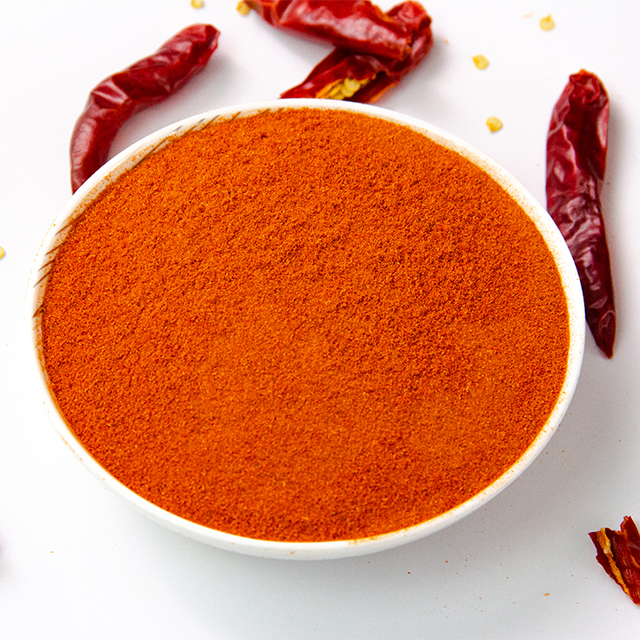
Ata lulú-10,000-15,000SHU
10,000-1,5000SHULulú ata yii jẹ turari didara Ere ti o ṣafikun adun ti adun ati ooru si ọpọlọpọ awọn n ṣe awopọ. Orisun lati awọn ata ata ti o dara julọ, ọja wa ti ṣe pẹlu konge lati pade awọn ipele ti o ga julọ ti didara ati itọwo.
-
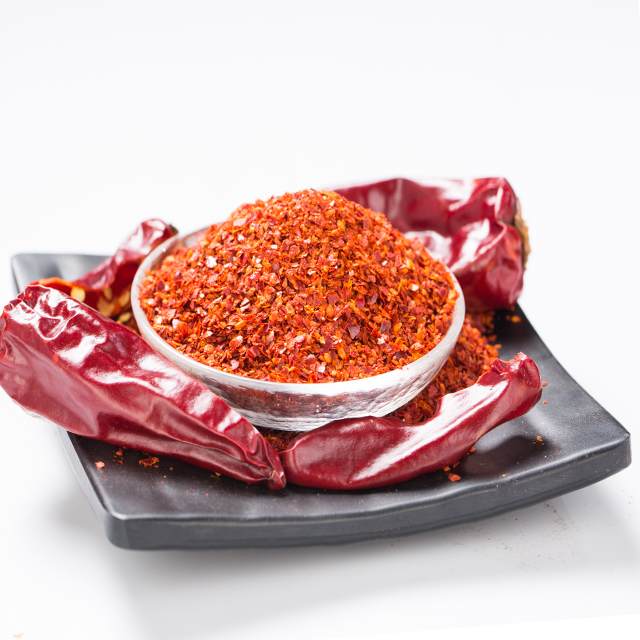
Dun paprika itemole
Ko lataPaprika ti o dun yii jẹ mimọ 100%, laisi awọn aaye, mimu, ati Red Sudan Red. Ọja wa ṣe iṣeduro mimọ ati didara julọ, ni idaniloju afikun adun si awọn ounjẹ rẹ. Laisi awọn abawọn ati iṣakoso didara okun, o duro bi yiyan ti o gbẹkẹle fun awọn alara ounjẹ. Ṣe alekun awọn ẹda onjẹ ounjẹ rẹ pẹlu paprika didùn Ere wa, jiṣẹ didara ti ko lẹgbẹ ati larinrin, afikun aibikita si awọn ilana ayanfẹ rẹ. Gbẹkẹle mimọ ti ọja wa fun iriri wiwa to dara ati didẹ.
-
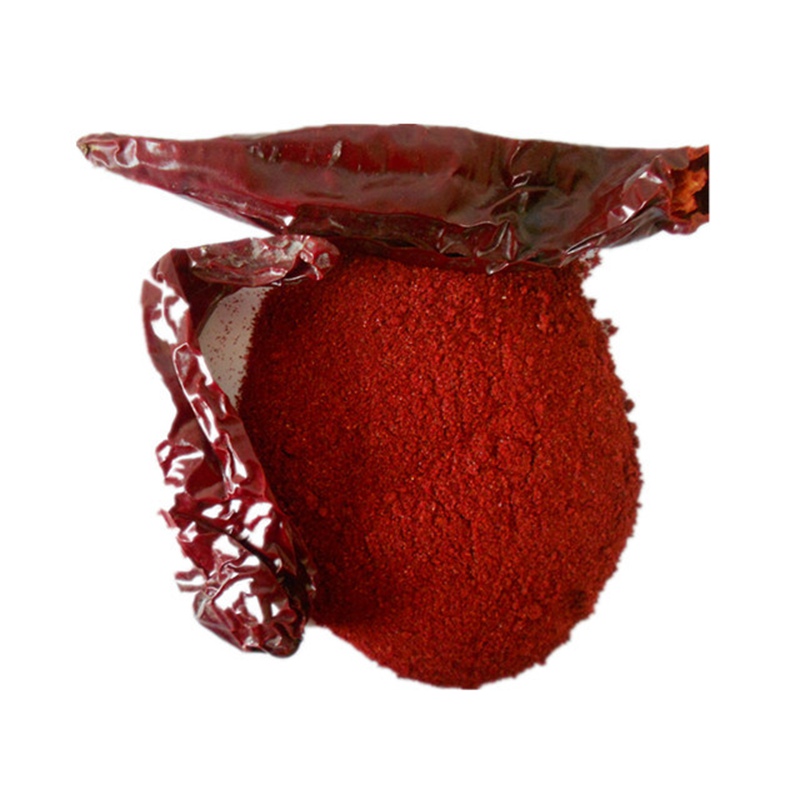
Dun paprika lulú
Ko lataLulú paprika didùn yii jẹ adayeba 100% laisi awọn afikun eyikeyi, ti o nfihan awọ pupa ti o larinrin, adun alailẹgbẹ ati didara to dayato. O jẹ akoko ti ko ni lata ti o le ṣee lo lati mu awọ awọn awopọ pọ si, ti o jẹ ki wọn fani mọra. Awọn agbara iyasọtọ ti lulú paprika didùn jẹ ki o jẹ yiyan ti o wapọ ati iwunilori fun awọn alara onjẹ ounjẹ.
Paprika lulú didùn nfunni awọn aṣayan isọdi fun awọn awọ oriṣiriṣi, ati apoti. a ni ileri lati accommodating Oniruuru isọdi aini.
-
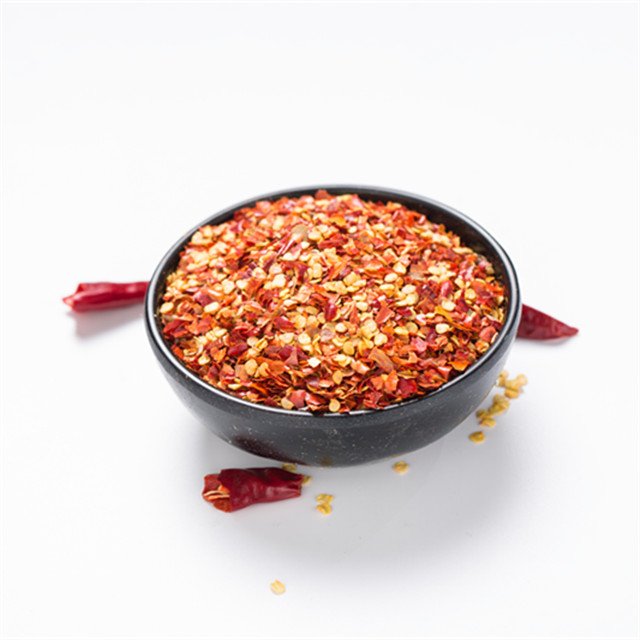
ata itemole-40,000-50,000SHU
40,000-50,000SHUIle-iṣẹ wa jẹ ibudo ti isọdọtun turari, ti nfunni ni ọpọlọpọ awọn ọja, pẹlu ata pupa ti a fọ, lulú ata, ata ti o gbẹ, awọn ege ata, ati epo ata. Laini ọja wa lọpọlọpọ n ṣaajo si ọpọlọpọ awọn iwulo ounjẹ, lati ṣafikun tapa amubina si awọn pizzas ati pasita si fifi awọn adun ọlọrọ sinu awọn ipẹtẹ ati awọn ọbẹ. Ọja kọọkan ninu gbigba wa ti gba iwe-ẹri EU olokiki, ti n jẹri si ifaramo ailopin wa si didara. Mu awọn ẹda onjẹ ounjẹ rẹ ga pẹlu awọn turari Ere wa, ti a ṣe fun ilọpo ati ododo, ni idaniloju iriri idunnu ati adun ni gbogbo oju iṣẹlẹ ibi idana ounjẹ.
-
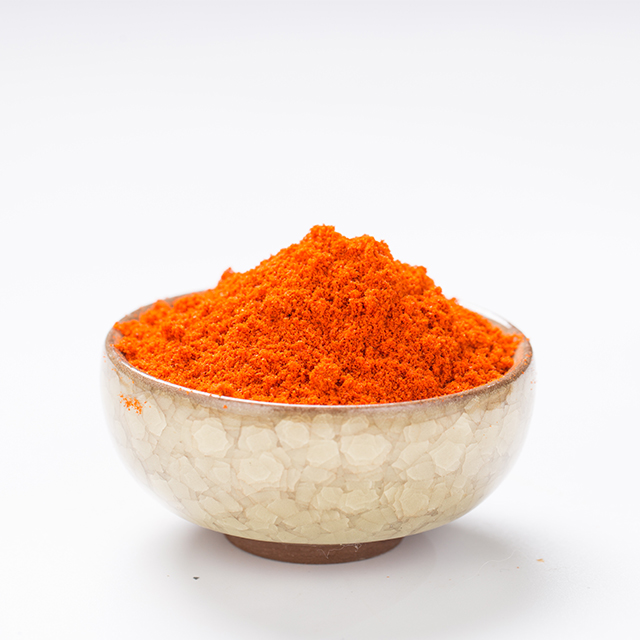
ata lulú-600,000SHU
60,0000SHULulú ata yii jẹ adayeba 100% laisi awọn afikun eyikeyi, ti o nfihan awọ pupa ti o larinrin, adun alailẹgbẹ, turari deede, ati didara to dayato. O ṣe iranṣẹ bi akoko yiyan ti ilera, gbigba awọn alabara laaye lati ṣatunṣe ipele ti turari ninu awọn ounjẹ wọn ni ibamu si awọn yiyan ti ara ẹni. Awọn agbara iyasọtọ ti iyẹfun ata wa jẹ ki o jẹ yiyan ti o wapọ ati iwunilori fun awọn alara onjẹ ounjẹ.
Lulú ata wa nfunni awọn aṣayan isọdi fun oriṣiriṣi awọn ipele spiciness, awọn awọ, ati apoti. a ni ileri lati accommodating Oniruuru isọdi aini.
-
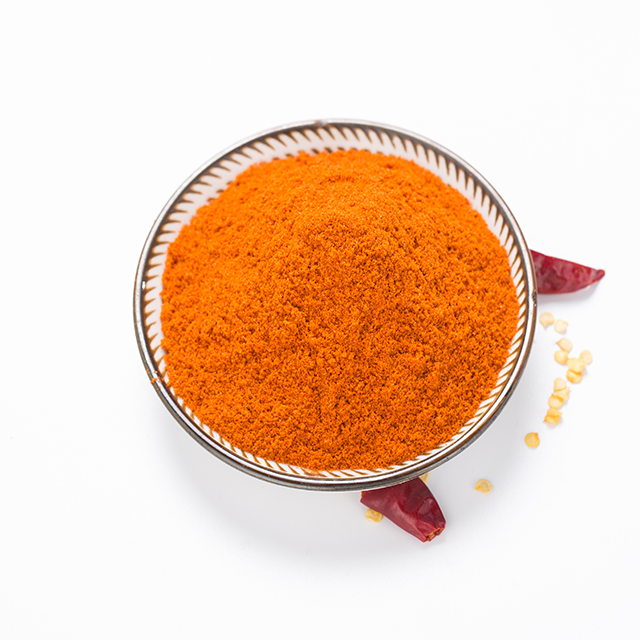
ata lulú-70,000-80,000SHU
70,000-80,000SHUAta lulú jẹ olokiki fun didara giga rẹ, jẹ mimọ ati ominira lati awọn afikun. A ni igberaga ni jiṣẹ ọja kan ti o kọja awọn iṣedede, gbigba iyin nipasẹ awọn ọja okeere lọpọlọpọ si Amẹrika, European Union, ati awọn orilẹ-ede miiran. Yan lulú ata wa fun iriri ounjẹ ounjẹ Ere, ti a ṣe afihan nipasẹ itọwo iyasọtọ ati ifaramo si didara ti o ti fi idi wa mulẹ bi olupese ti o ni igbẹkẹle ni awọn ọja agbaye.
-
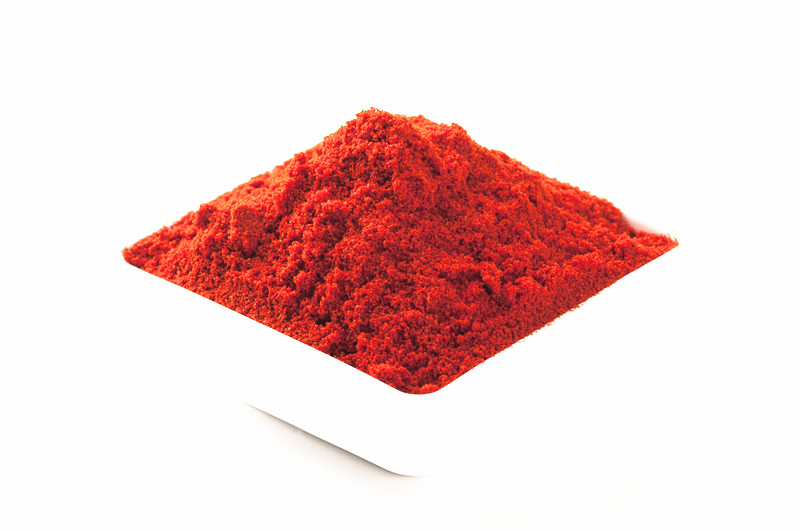
ata lulú-50,000SHU-60,000SHU
50,000-60,000SHULulú ata yii duro jade bi yiyan Ere - mimọ, laisi afikun, ati laisi giluteni. Orisun lati awọn ata ata ti o dara julọ, ọja wa ṣe iṣeduro iriri turari gidi kan. Ni ọfẹ lati awọn afikun ati giluteni, o funni ni ifọwọkan adayeba ati iwulo si awọn ẹda onjẹ ounjẹ rẹ. Yan lulú ata wa fun adun mimọ ati ìrìn wiwa wiwa ni ilera!
What Is The Trick To A Good Chili?
Chili, a beloved spice used worldwide, is a versatile ingredient that adds depth, flavor, and heat to any dish. Known for its rich, spicy kick, chili peppers come in various forms, including fresh, dried, powdered, and as chili sauce or oil. Whether you're an adventurous cook or someone who enjoys adding a touch of heat to your meals, chili products offer the perfect solution.
Fresh Chili Peppers are vibrant, juicy, and packed with heat. From mild to extremely spicy varieties, fresh chilies can be sliced, diced, or used whole to infuse dishes with their pungent aroma. Great for stir-fries, salsas, and curries, fresh chilies add a fresh and bold flavor to your meals.
Dried Chili Peppers are perfect for slow-cooking and flavor extraction. When dried, chilies intensify their heat and smokiness. You can use them whole, ground into chili powder, or rehydrate them to create sauces and soups with a complex depth of flavor.
Chili Powder is a staple in kitchens around the world. A blend of dried chili peppers and other spices like cumin and garlic, chili powder adds a punch of heat and a savory aroma to dishes. Perfect for seasoning meats, soups, stews, and even grilled vegetables, chili powder offers convenience without compromising on flavor.
Chili Sauces and Oils are excellent for those who prefer a ready-to-use option. These products combine chili with ingredients like garlic, vinegar, or sesame oil to create flavorful sauces and oils that elevate your dishes instantly. Whether you like it sweet, tangy, or fiery, chili sauces and oils are perfect for dipping, marinating, or adding to your favorite foods.
Enhance your culinary creations with chili a bold, flavorful ingredient that brings spice and excitement to every meal!
Why Are Peppers Called Chili?
The term "chili" is often used to refer to various types of hot peppers, but its origin and usage are a bit more complex. Here’s why peppers are called "chili":
1.Etymology from Nahuatl (Aztec language):
The word "chili" comes from the Nahuatl language, which was spoken by the Aztecs and other indigenous peoples in Mesoamerica. In Nahuatl, the word for pepper is "ch? lli". The Aztecs and other native groups in Central and South America cultivated and used chili peppers long before Europeans arrived, and they were integral to their cuisine.
When Spanish explorers encountered these peppers in the Americas in the 15th and 16th centuries, they adopted the Nahuatl word "ch? lli" to describe them. The term eventually made its way into other languages, including English, where it became commonly used.
2. Naming Confusion and Global Spread:
The word "chili" is used differently around the world. In many places, "chili" refers to the fruit of the Capsicum plant, which can be used fresh, dried, or powdered to add heat to food. However, when used in the context of chili con carne (the famous spicy stew), the name "chili" specifically refers to the dish made with ground meat, chilies, beans, tomatoes, and spices.
In the U.S. and many English-speaking countries, the term "chili" has become synonymous with hot peppers, especially Capsicum annuum, which includes common varieties like jalapenos, serranos, and cayennes. However, in other parts of the world, like India and some parts of Asia, the term "chili" often refers to the spicier varieties of Capsicum that are commonly used in their cuisines.
3. "Chili" vs. "Chili Pepper":
In the 17th century, when Christopher Columbus brought the peppers back to Europe, they were initially thought to be a type of pepper (which they resemble in taste and appearance). The name “pepper” had already been used to describe the spicy fruit of the Piper nigrum plant (black pepper), and this led to the widespread use of the term "pepper" for the Capsicum family, despite them being botanically unrelated. Over time, the term "chili pepper" was adopted in many languages to differentiate the spicy peppers from black pepper.
In this sense, "chili" became shorthand for chili pepper, the pepper that imparts heat, especially from the Capsicum family, which includes many varieties of peppers that vary in heat intensity.
4. Cultural Influence and Usage:
The spread of chili peppers around the world, particularly after the Columbian Exchange (which was the exchange of plants, animals, and cultures between the Americas and the Old World), played a significant role in shaping global cuisine. As chili peppers became more commonly used in a wide range of dishes, the name “chili” was often applied to dishes and recipes that incorporated these peppers, such as chili con carne, chili oil, and chili sauce.
In summary, "chili" is derived from the Nahuatl word for pepper, "ch? lli", and has evolved in usage due to its widespread adoption in cuisines around the world. It’s used to refer to both the pepper itself and the dishes made with it, particularly those that are spicy and contain peppers.








